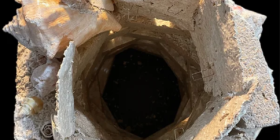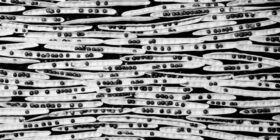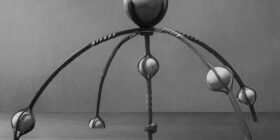On TRANSICONMORPHOSIS – an interview with Emilio Vavarella and Fito Segrera
If in the future, the possibility of face-to-face communication becomes less widely used and written communication becomes crystallized in a series of immutable forms, humans will lose the empathic abilities that today are, in part, reproduced by emoji and emoticons. TRANSICONMORPHOSIS is an interactive artwork that proposes an ambiguous and experimental communication system for the near future, the result of a theoretical reflection on the development of new forms of technological communication, their effects on human beings, as well as their political effects.
Interview with Emilio Vavarella and Fito Segrera conducted by
Richard Bright (Interalia Magazine) and Vasia Hatzi (MEDinART)

Emilio Vavarella

Fito Segrera
Question: Can you begin by saying something about your multi-dimensional background? What are your main goals as an artist?
Emilio Vavarella: I have a strong theoretical background grounded in interdisciplinary, artistic, cultural and media studies, which – together with my interest in technology and philosophy – informs my artistic goals. My main goal can be seen as a multi-faceted investigation on contemporary computative, algorithmic, and networked forms of metamorphosis through the idea of “embracing technology” and a visual, practice-based, interdisciplinary approach.
Fito Segrera: My background is multidisciplinary one. Before studying fine arts (with a highly conceptual focus) I studied Mechatronics as well as audio-visuals and multimedia. That particular combination of disciplines opened a new dimension to my work; one concerned about the intersection of the humanities with the exact sciences. I currently focus on topics such as: artificial intelligence, ontological technologies, computer simulated environments, mixed reality installations and mediated objects. All my art pieces bring up fundamental question that concern the nature of being human and the relationship we currently hold with technological systems.
Question: As an artist you have collaborated with engineers to create artworks. Please tell us about those works.
Emilio Vavarella: For TRANSICONMORPHOSIS I worked with Fito Segrera, who programmed the Arduino and chat system on which the work is based. But I was also looking for an artist who was interested in the project from a theoretical perspective, not only an engineer to work on the technical parts. This is a main difference between my most recent collaborations (with technically-savy artists) and my previous ones (with engineers).
Fito Segrera: Because of my experiences in other fields beside arts, I mostly work on my own or with other artists. Often I collaborate with technologically-skilled artists which enhance the process in both conceptual and technical terms. A few times in the past I have engaged with engineers in some of my art projects; I have to say that these had a very open way of seeing artistic or creative processes outside of the engineering sphere. It is, sometimes, hard to find engineers interested in engaging with artists; there is still a mistrust in the possibility of art as a knowledge producer.

TRANSICONMORPHOSIS, 2013. Installation. Variable dimensions
Question: What is the aim of TRANSICONMORPHOSIS, your collaborative installation with Fito Segrera?
----------------------------------------------------
The rest of this article is reserved for members only. If you have a subscription, please sign in here. Otherwise, why not Subscribe today?
Get the Full Experience
Read the rest of this article, and view all articles in full from just £10 for 3 months.



No comments yet.